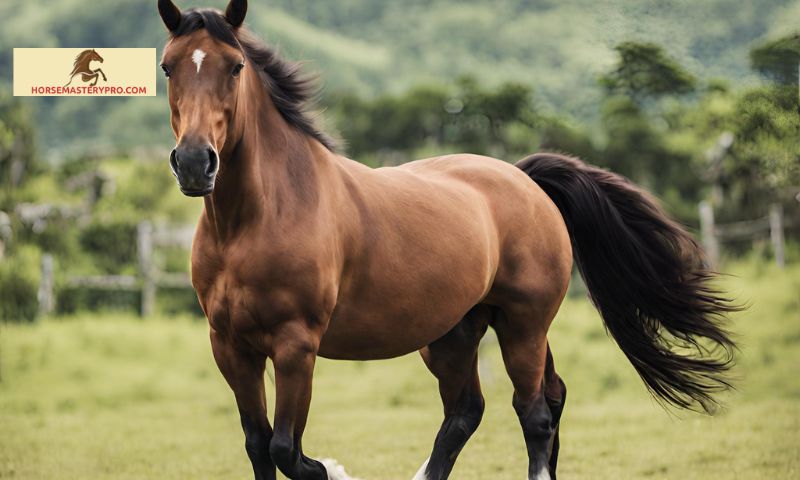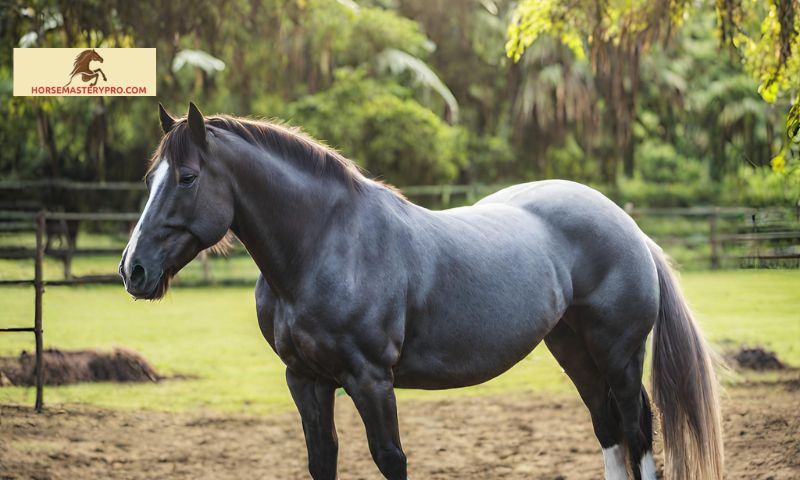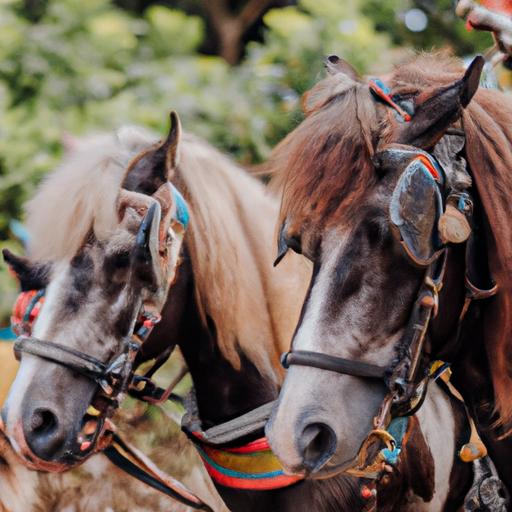Uncover the fascinating world of horse breeds in the philippines. Explore their historical significance, cultural importance, and diverse characteristics.
The Philippines, a land of diverse cultures and breathtaking landscapes, is also home to a fascinating array of horse breeds. In this article, we delve into the captivating world of horse breeds in the Philippines, uncovering their historical significance and understanding their importance in the country today.
A. Importance of Horse Breeds in the Philippines

Horses have played a crucial role in the Philippines for centuries, deeply ingrained in the country’s culture and heritage. From transportation and agriculture to sports and recreation, these majestic creatures have been invaluable companions to Filipinos throughout history. But why are horse breeds so important?
First and foremost, horse breeds in the Philippines contribute significantly to the country’s economy. They serve as reliable workhorses in agriculture, aiding farmers in tilling fields and transporting goods. Moreover, the equestrian industry, encompassing horse racing, shows, and recreational activities, generates substantial revenue and employment opportunities.
Beyond economic aspects, horses hold a special place in Filipino culture. They are revered for their beauty, strength, and loyalty. From folklore to traditional celebrations, horses have become symbols of power, elegance, and freedom. Whether it’s a grand parade or a local festival, these magnificent creatures often take center stage, captivating the hearts of both locals and tourists alike.
B. Historical Background of Horse Breeding in the Philippines

The history of horse breeding in the Philippines dates back to the Spanish colonial era, when the Spanish introduced horses to the archipelago. These noble steeds were primarily used for transportation, warfare, and agricultural purposes. Over time, the native horse breed, known as the Philippine horse, emerged through a mix of Spanish and local breeds. This indigenous breed adapted to the country’s unique terrain and climate, making it well-suited for various tasks.
As centuries passed, the influence of foreign horse breeds, such as the Thoroughbred and American Quarter Horse, made their mark on the Philippine horse population. These breeds brought new qualities and characteristics, enriching the diversity of horse breeds found in the country.
Today, horse breeding in the Philippines continues to thrive, with efforts to preserve and promote native breeds alongside international ones. This commitment to preserving the country’s equine heritage ensures that future generations can witness the magnificence of these remarkable animals.
In the upcoming sections, we will explore the popular horse breeds in the Philippines, delve into lesser-known breeds, discuss the role of horses in Philippine culture and sports, and shed light on the challenges faced and preservation efforts undertaken to safeguard these invaluable creatures.
Join me on this remarkable journey as we unravel the enchanting world of horse breeds in the Philippines, discovering their unique traits, cultural significance, and everlasting impact on the nation.
Stay tuned for Section II where we explore the popular horse breeds in the Philippines.
Popular Horse Breeds in the Philippines
The Philippines is home to a diverse range of horse breeds, each with its own unique characteristics and contributions to the country’s equine landscape. Let’s explore some of the most popular horse breeds in the Philippines and uncover their fascinating traits.
A. Native Philippine Horse Breed
The native Philippine horse breed, also known as the “Pony of the Americas,” holds a special place in the hearts of Filipinos. These horses have adapted to the country’s tropical climate and diverse terrains, making them resilient and well-suited for various tasks.
1. Characteristics and Physical Attributes
The native Philippine horse breed typically stands at an average height of 12 to 14 hands. They possess a sturdy build, displaying strength and agility. These horses are known for their endurance, making them ideal for long-distance travel and agricultural work. With their surefootedness, they navigate challenging terrains with ease.
2. Historical Significance
The native Philippine horse breed played a vital role in shaping the country’s history. They were integral to transportation during the Spanish colonial era, aiding in the exploration and development of different regions. These horses were also utilized in agriculture and played a crucial role in the cultural and social fabric of Filipino communities.
B. Thoroughbred
The Thoroughbred breed, renowned for its speed and elegance, has gained popularity beyond its origins in England. This breed has found a special place in the hearts of horse enthusiasts in the Philippines.
1. Introduction to the Breed
Thoroughbreds are known for their athletic prowess and graceful appearance. Bred for racing, these horses possess a lean and muscular build, enabling them to reach impressive speeds. With their refined features and spirited nature, Thoroughbreds captivate the attention of both experienced riders and spectators.
2. Uses and Popularity in the Philippines
In the Philippines, Thoroughbreds excel in the horse racing scene. Renowned for their speed and competitive spirit, these horses participate in prestigious racing events across the country. Their remarkable performances and thrilling races draw crowds of passionate fans, making Thoroughbred racing an exciting and popular sport in the Philippines.
C. American Quarter Horse
The American Quarter Horse, known for its versatility and adaptability, has gained recognition in the Philippines for its remarkable qualities.
1. Overview of the Breed
The American Quarter Horse derives its name from its ability to sprint short distances, covering a quarter of a mile in lightning-fast time. These horses possess a well-muscled and compact body, making them agile and quick on their feet. Their calm temperament and intelligence make them suitable for various disciplines.
2. Adaptability and Versatility
One of the key strengths of the American Quarter Horse is its adaptability to different environments and tasks. They excel in ranch work, herding cattle, and are highly sought after for Western riding disciplines. Their versatility makes them a popular choice among riders in the Philippines, whether for leisure riding, competitive events, or farm work.
3. Presence in the Philippines
The American Quarter Horse has made a mark in the Philippines, with a growing population and a dedicated community of enthusiasts. Their remarkable qualities and versatility have contributed to their popularity and integration into various aspects of the country’s equestrian landscape.
Continue reading as we explore lesser-known horse breeds in the Philippines and delve deeper into the rich tapestry of the country’s equine heritage. Section III awaits you!
Lesser-Known Horse Breeds in the Philippines

While the Philippine horse breed and internationally recognized breeds like the Thoroughbred and American Quarter Horse take the spotlight, there are several lesser-known horse breeds in the Philippines that deserve recognition. Let’s explore these unique breeds that contribute to the country’s rich equine heritage.
A. Marwari Horse
- Introduction to the breed
Originating from India, the Marwari horse is a rare and distinctive breed that has found its way to the Philippines. Known for its elegant appearance and signature curled ears, the Marwari horse has captured the hearts of many equestrian enthusiasts.
- Unique features and characteristics
The Marwari horse possesses a regal and statuesque presence. Its most distinguishing feature is its curled ears, which give it a distinctive look. These horses are known for their endurance, agility, and intelligence, making them suitable for various equestrian disciplines. With their striking appearance and versatile nature, Marwari horses have become a prized possession for enthusiasts in the Philippines.
B. Criollo Horse
- Overview of the breed
The Criollo horse breed originated in the Iberian Peninsula and was brought to the Philippines during the Spanish colonial period. These horses are known for their hardiness, adaptability, and versatility.
- Adaptability to the Philippine climate
The Criollo horse’s ability to thrive in the diverse climates of the Philippines makes it a valuable breed in the country. They have developed resilience to withstand the tropical heat, humidity, and challenging terrains, making them ideal for various tasks such as agriculture, transportation, and recreational activities.
C. Andalusian Horse
- Introduction and origin
The Andalusian horse, also known as the Pure Spanish Horse, traces its roots back to the Iberian Peninsula. This breed has a long and storied history, often associated with nobility and royalty. The influence of Andalusian horses can be seen in various equestrian disciplines around the world.
- Notable traits and uses in the Philippines
Andalusian horses are renowned for their grace, elegance, and athleticism. These horses excel in dressage, show jumping, and classical riding disciplines. In the Philippines, they have gained popularity among equestrian enthusiasts and are often seen in exhibitions, parades, and cultural events, showcasing their impressive movements and captivating presence.
By recognizing and appreciating these lesser-known horse breeds in the Philippines, we acknowledge the diversity and beauty of the equine world. These breeds contribute to the country’s equestrian landscape, enriching the cultural tapestry and offering unique opportunities for horse enthusiasts to explore new dimensions of horsemanship.
Stay tuned for Section IV, where we delve into the role of horse breeds in Philippine culture and sports.
Role of Horse Breeds in Philippine Culture and Sports
A. Traditional uses of horses in the Philippines
Horses have been an integral part of Philippine culture for centuries, playing a significant role in various aspects of daily life. Traditionally, horses were utilized for transportation, enabling people to traverse long distances and navigate challenging terrains. They were also essential in agriculture, assisting farmers in plowing fields and transporting crops.
Beyond practical purposes, horses hold deep cultural significance in the Philippines. They are prominently featured in local festivals, parades, and religious processions, adding grandeur and elegance to the celebrations. These magnificent creatures symbolize strength, bravery, and nobility, embodying the spirit of the Filipino people.
B. Horse Racing and Equestrian Sports in the Country
Horse racing and equestrian sports have gained tremendous popularity in the Philippines, both as spectator events and competitive disciplines. The thrill of horse racing captivates audiences, drawing enthusiasts from all walks of life. The country boasts several renowned horse racing events that showcase the speed, agility, and stamina of these incredible animals.
1. Popular Horse Racing Events
The Philippine horse racing scene is vibrant and dynamic, with major events that attract large crowds and avid bettors. The Manila Jockey Club hosts the prestigious Triple Crown Series, a highly anticipated racing spectacle featuring the country’s top Thoroughbred horses. The racecourse comes alive with the thundering hooves and the exhilarating chase for victory, creating an electrifying atmosphere that leaves spectators on the edge of their seats.
2. Equestrian Sports and Competitions
Equestrian sports have also gained prominence in the Philippines, with a growing community of riders and enthusiasts. Show jumping, dressage, and eventing are among the disciplines that showcase the remarkable bond between horse and rider. Competitions and tournaments provide a platform for riders to demonstrate their skills, grace, and precision, while promoting sportsmanship and camaraderie among participants.
These equestrian events not only entertain but also inspire and educate, fostering a deeper appreciation for the capabilities and beauty of horse breeds in the Philippines. They serve as a testament to the enduring passion and dedication of the equestrian community in the country.
In the next section, we will explore the lesser-known horse breeds in the Philippines, uncovering their unique characteristics and contributions to the equine heritage of the nation.
Stay tuned for Section V where we delve into the lesser-known horse breeds in the Philippines.
Challenges and Preservation Efforts for Philippine Horse Breeds
The preservation of Philippine horse breeds is crucial to safeguarding the country’s rich equine heritage. However, these breeds face several challenges that threaten their existence. In this section, we explore these challenges and shed light on the commendable preservation efforts underway.
A. Threats to Native Horse Breeds
Native horse breeds in the Philippines face various threats that endanger their survival. One significant threat is the decline in suitable habitats. As urbanization and industrialization expand, the availability of open spaces for horses to graze and roam diminishes. This loss of natural habitats not only affects the physical well-being of the horses but also disrupts their breeding patterns and genetic diversity.
Additionally, the demand for imported horse breeds poses a challenge to the preservation of native breeds. With the allure of foreign breeds, the population of native horses dwindles, as breeders and enthusiasts focus on acquiring and breeding international pedigrees. This shift in preference further marginalizes the native breeds, putting them at risk of extinction.
B. Conservation and Breeding Programs in the Philippines
To combat the challenges faced by Philippine horse breeds, various conservation and breeding programs have been initiated across the country. These programs aim to preserve and promote the native breeds while ensuring their sustainability for future generations.
1. Government Initiatives
The Philippine government has recognized the importance of preserving native horse breeds and has implemented several initiatives to support their conservation. These initiatives include the establishment of protected areas for horses, the implementation of breeding programs, and the provision of financial incentives to breeders who focus on native breeds. These government efforts play a vital role in raising awareness and promoting the significance of native horse breeds.
2. Private Organizations and Breeders
Private organizations and dedicated breeders also play a crucial role in preserving Philippine horse breeds. They actively engage in breeding programs, focusing on maintaining genetic diversity and promoting the native breeds. These organizations and breeders collaborate with the government and share their expertise to ensure the long-term survival of these magnificent animals.
Through the combined efforts of the government, private organizations, and passionate breeders, there is hope for the preservation of Philippine horse breeds. By raising awareness, implementing conservation measures, and supporting breeding programs, these initiatives contribute to the continued existence and recognition of the unique equine heritage of the Philippines.
Stay tuned for Section VI where we conclude our exploration of horse breeds in the Philippines, emphasizing their importance and future prospects.


